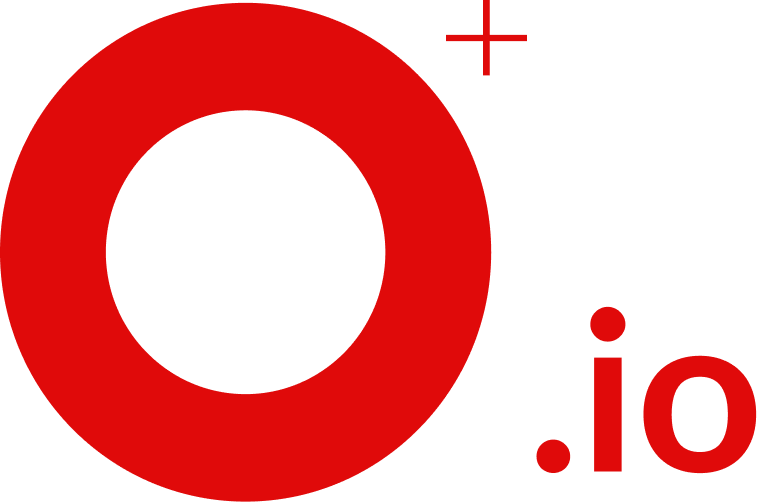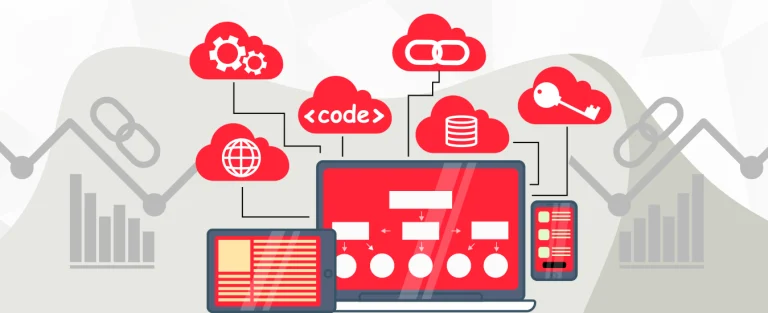A Complete Guide For SAAS SEO
The market size of SaaS (Software As A Service) companies as of 2022 stands at a staggering 170 Billion Dollars, that’s a big number and this my friend is the market size of SaaS (Software As A Service) companies as of 2022. This humongous number is expected to grow in the coming years.
But looking at this significant number makes us realize that SaaS is a big industry and has a significant market share. And when the competition is so huge then making your SaaS business stand out above the competitors is a challenge.
With many big players like Microsoft with a market share of 17% in the SaaS industry, it becomes a daunting task to make a space for your business.
But this can be done because we live in a world where smartphones and the Internet are easily accessible to almost everyone. So if your product/service is better than the competitor then no one can stop you from being the leader.
Although, it’s easier said than done because the Internet is very crowded and chances are your message or your business website might get lost in the crowd.
Then what can you do about this? Don’t worry; here is a comprehensive SaaS SEO guide that can help you navigate your SEO efforts in the cutthroat competition and help you improve your online presence.
You can make use of SaaS SEO, which will help you put your business in front of the right people. Before we talk about how you can use B2B SaaS SEO for your business growth let us first understand what is SaaS search optimization?
What Is SAAS SEO?
SEO for saas companies is not very different from normal SEO practice and can be understood as normal SEO. But there is a silver lining and that is when a company offers SaaS products it’s difficult to explain the entire product in a few lines so the on-page SEO game needs to be very precise.
Also, to let people know about your product you’ll have to go the extra mile with off-page SEO as well. You’ll have to write good blogs explaining your service, promote it vigorously on social platforms and do a lot of optimization.
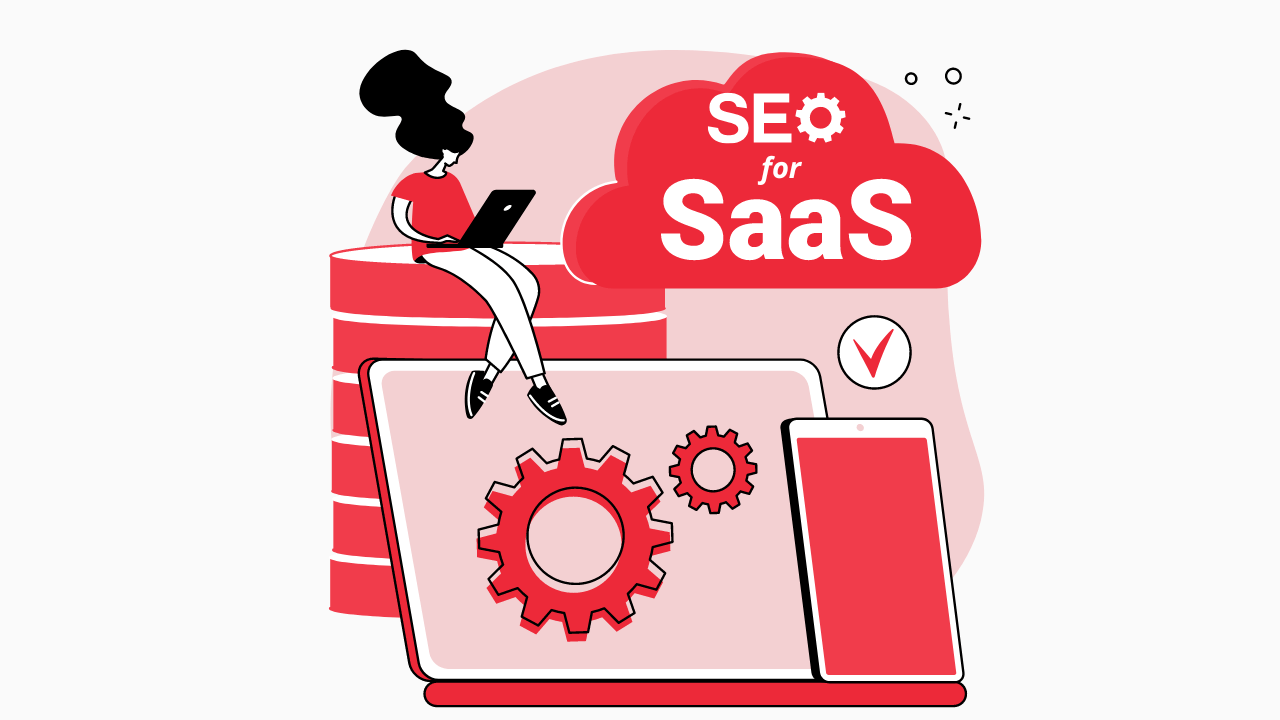
So, SEO for SaaS companies is a more dedicated way of implementing your SEO tactics and helping your business grow.
But what makes dedicated SaaS SEO services so important for companies?
Why SEO Is Important For SaaS Companies?
Investing in a good SaaS SEO strategy helps your business grow organically and is the most affordable way to increase your brand value. Along with this, there are many benefits like
1. Helps improve content quality
2. Helps reduce customer acquisition costs
3. Helps increase the conversion rate
4. Helps boost online visibility
5. Helps improve organic traffic
All these benefits are just the tip of the iceberg. And now that you have an idea about the importance of SaaS SEO. Now it’s time to understand how SaaS search optimization helps you grow your organic traffic.
How SaaS SEO Helps To Grow Organic Traffic?
Search engine optimization dedicated specifically to SaaS companies helps them grow rapidly and attract more potential customers. This is done by fully understanding the SaaS product and its target audience.
After this, you’ll have to finalize the strategy that you’ll follow to attract more customers. In this process, you’ll have to finalize the SaaS keywords that the target audience might use to search for your product.

Now that your keywords are finalized you can use them while publishing the content and writing your website content. Also, make sure you use the keywords in the right density.
Apart from this B2B SaaS SEO helps you optimize your website both on-page and off-page while significantly improving your search rankings. And as well all know SEO to be SaaS SEO is an organic way to increase your business traffic, so if you implement the right SaaS search optimization strategy your organic traffic will increase tenfold.
But keep in mind that SEO is a long game, so make sure you are patient and keep track of your SaaS growth via the strategy. And if you think something isn’t working then make sure you change it for the better.
There is another concept that comes into the picture and that is the SaaS marketing funnel.
SAAS Marketing Funnel
SaaS marketing funnel is a strategic method of nurturing your leads and converting them into leads. You can divide a SaaS marketing funnel into several levels so it becomes easy for you to bifurcate your business leads based on their buyer’s journey level.
Now you might wonder what makes a SaaS marketing funnel so different from let’s say a traditional marketing funnel. Let us help you understand why the SaaS marketing funnel is different.
Generally, a marketing or client acquisition funnel is divided into four different levels
- Awareness
- Engagement
- Exploration
- Conversion
But when it comes to the SaaS marketing funnel another level is added and that’s the “Retention” level. As the name suggests at this level the main goal is to retain as many customers as possible.
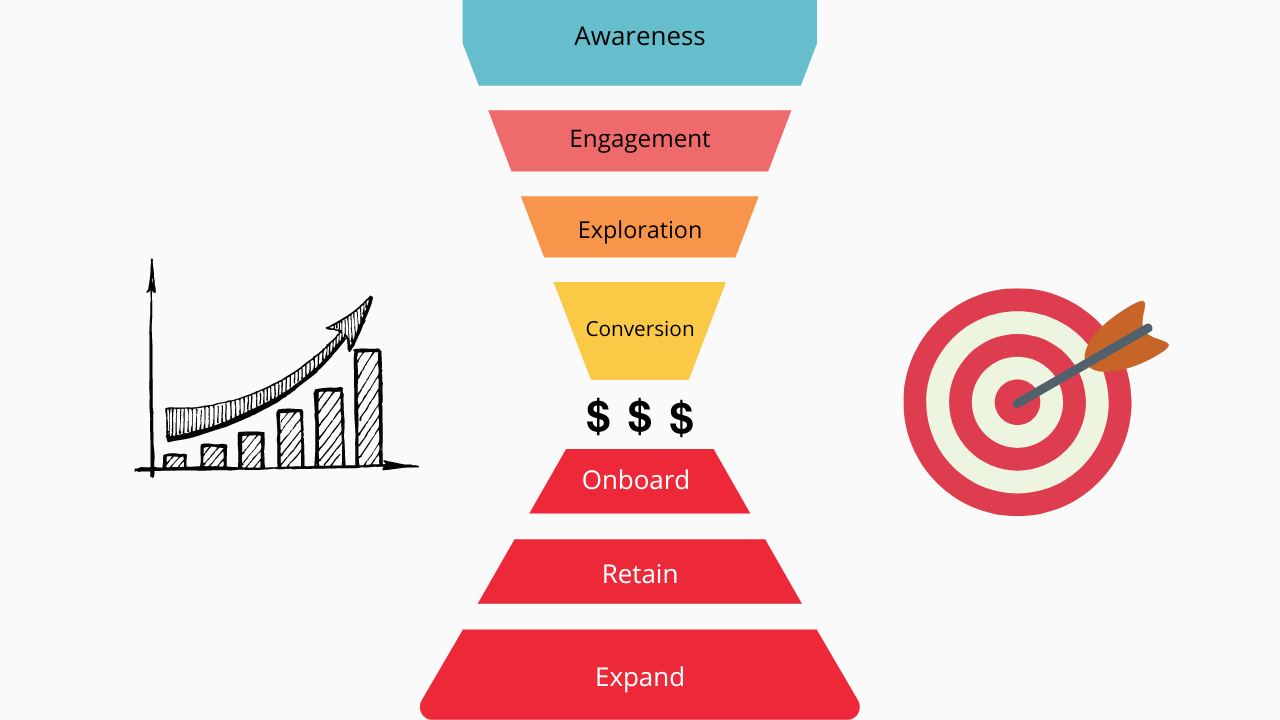
This level is very important because you are not selling a product instead you are selling your service so you’ll have to retain your existing clients. To do this you’ll have to keep updating your services and provide the best service possible.
Now let’s circle to SaaS SEO, because having an impactful SaaS marketing funnel will need to have the right keywords in your marketing content. Because with the right keywords your product/service will reach a wider audience. But having the right keywords needs thorough research and a lot more.
So now let’s talk about keyword research for SaaS companies.
Keyword Research For SaaS Companies
Be it on-page SEO or off-page SEO keyword research is the most important aspect to get the most out of it. But SaaS SEO as we mentioned is slightly different from traditional/normal SEO meaning the keyword research will be different as well.
With different keyword research the entire process of link building, and SaaS search optimization changes drastically.

But another that comes to mind is that then how do you do the keyword research for SaaS companies? That’s why we have mentioned various steps you need to follow to complete your SaaS keyword research.
Step 1 – Understand your buyer persona
Step 2 – Find keywords related to your buyer persona
Step 3 – Finalize the main keywords
Step 4 – Used the keyword for optimization
But before you move on to these you need to have a basic knowledge about the different types of SaaS keywords. Majorly there are types of SaaS keywords
- Navigational keywords – These keywords are used when someone wants to reach a particular destination on your business website like email, phone number, customer care, etc.
- Commercial keywords – These keywords are used when you want to educate someone about your product or services.
- Transactional keywords – These keywords are used when a user is ready to pay and is at the last stage of making a purchase. So it’s fair to say these keywords need to be the most powerful.
- Informational keywords – These keywords are used to get new people to learn about your business but generally, they don’t have any intention of buying your service any time soon.
And that you have the steps to complete keyword research and also understand different types of SaaS keywords you can move into the execution phase. If you follow these steps with the right keywords then SaaS SEO is your best shot at getting organic website traffic.
Now that’s enough about keywords, it’s time to look into some techniques you can use in your SaaS search optimization.
On-Page Optimization for SaaS Website
As a SaaS business, having a well-optimized website is crucial for attracting and retaining customers. On-page optimization is a key aspect of this process, as it involves optimizing various elements on your website to substantially improve your search engine rankings and overall user experience. This SaaS SEO guide offers seven on-page optimization techniques that you can implement on your website to enhance your online presence and attract more customers.
Optimizing Meta Titles and Descriptions
Meta titles and descriptions are crucial components of on-page optimization for any website. Meta titles and descriptions are HTML tags that provide a brief summary of the content on a page. They appear in the search engine results pages (SERPs) and are often the first impression a user has of your website.
When creating your meta titles, ensure that they accurately describe the content on the page and include your primary SaaS keywords. Avoid using duplicate titles, as this can negatively impact your SEO. Similarly, when creating meta descriptions, ensure that they are compelling and provide an accurate summary of the content on the page.
Creating SEO-Friendly URLs
URLs are another crucial element of on-page optimization. An SEO-friendly URL is short, descriptive, and includes your primary keywords. When creating your URLs, ensure that they are descriptive and accurately reflect the content on the page. Including your primary keyword in the URL can also improve your search engine ranking and make it easier for users to find your website.
Using Header Tags
Header tags are HTML tags used to identify headings and subheadings on a web page. Using header tags correctly can improve the readability of your content and make it easier for users to navigate your website. Header tags also help web crawlers understand the structure and hierarchy of your content, which can improve your search engine ranking. When using header tags, ensure that you use them in order (H1, H2, H3, etc.) and include your primary SaaS keywords in the headings.
Including Internal and External Links
Internal and external links are also essential components of on-page optimization. Internal links point to other web pages on your website, while external links point to pages on other websites. Including both internal and external links can improve the user experience and provide additional context for search engines. When including internal links, ensure that they are relevant and provide value to the user. When including external links, ensure that they are high-quality and relevant to your content.
Optimizing Images and Videos
Optimizing images and videos is another crucial aspect of on-page optimization. Images and videos can improve the user experience and make your content more engaging.
When optimizing images, ensure that they are compressed and include alt text that accurately describes the image. When optimizing videos, ensure that they are hosted on a reliable platform and include a transcript or captions.
Ensuring Mobile Responsiveness
Mobile responsiveness is a critical component of on-page optimization in today’s digital age. With more and more users accessing websites from their mobile devices, ensuring that your website is mobile-friendly is essential for attracting and retaining customers. When designing your website, ensure that it is responsive and adjusts to fit any device’s screen size. This can be achieved using responsive design techniques, such as flexible images and CSS media queries. Testing your website on multiple devices and platforms can also help ensure that your website is mobile-friendly and provides an optimal user experience.
Using Schema Markup
Schema markup is another type of microdata that can be added to your website’s HTML to provide additional context for search engines. Schema markup helps search engines to understand the website content and improve your search engine ranking. When using schema markup, ensure that you use the correct markup for each type of content on your website, such as articles, products, and reviews.
Advance Techniques For SAAS SEO
SEO is a long game that’s for sure but then how do you ensure that what you are doing will work in your favor or not? Well to be completely sure you’ll have to wait but there is something that you can do to increase your success rate and that’s to use advanced SaaS SEO techniques.
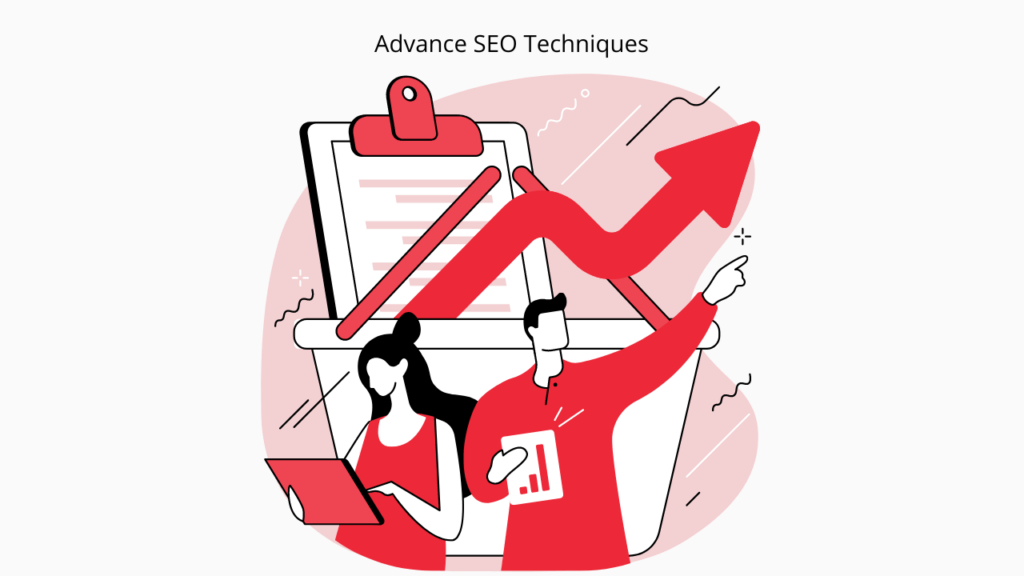
There are several techniques out there but we here have mentioned only a few best ones
- Have a comment section on your website
- Make use of original images in your content
- Optimize your Google review page
- Make use of voice search
- Use pagination to speed up crawling
- Have a perfect blend of low and high-density keywords
Apart from this, there are several other advanced SEO techniques that you can use to scale your business. But do you know that content marketing for a SaaS company is quite different so the SEO strategy for it will be different as well?
But why is it different? Let’s find out
Why is Content Marketing For SaaS Companies Different?
Content marketing is one of the best ways for SaaS companies to attract more traffic organically. According to an analysis done by Cobloom, many top SaaS companies make use of content marketing to attract more traffic and get an average of 45,700 organic search results.
Looking at this number it makes sense to invest your time and energy into content marketing. But the content marketing of SaaS companies is different from traditional content marketing.
Now you must be wondering how?
It’s because SaaS companies deal in services and much technical jargon is associated with them. With so much technical jargon it becomes difficult for people to understand the services offered by companies.
This whole situation makes content marketing the best solution to explain to people your product/service. Because when you utilize content marketing you don’t have any word constraints which makes it easier and more convenient for you to explain the product.
Explaining about your product entails one more benefit that helps in client retention and this phase of retention is why the content marketing strategy of SaaS is entirely different. Having a dedicated content marketing strategy clubbed with dedicated SaaS SEO will help you retain clients because it will help them educate them about the new features.
Now you have a clear understanding of why you should have a different content marketing strategy for SaaS companies. To help you enhance your strategy we have also pointed out some bonus SEO tips that’ll make your SaaS strategy even more robust.
Off-Page Optimization for SAAS Websites
Off-page optimization is an essential part of the SaaS SEO guide for SaaS websites. While on-page optimization involves optimizing the website’s content and structure, off-page optimization focuses on improving the website’s visibility and authority on external websites. Following are some crucial steps in off-page optimization for SaaS websites.
Defining link building
Link building is a fundamental part of off-page optimization for SaaS websites. It refers to the practice of acquiring hyperlinks from other websites to your own. These hyperlinks are also known as backlinks or inbound links. The primary goal of link building is to increase the authority and visibility of your SaaS website in search engine results pages (SERPs). Therefore, a solid link-building strategy can help improve your SaaS website’s online presence, domain authority, and search engine rankings.
Identifying link-building opportunities
To identify link-building opportunities, you must conduct thorough research to determine the most authoritative and relevant websites in your niche. Various tools, such as Ahrefs, SEMrush, and Moz, can help you identify the top-performing websites in your industry. Once you have identified the websites, you can evaluate their backlink profiles to determine the types of content they link to and the quality of the backlinks.
Creating link-worthy content
Creating link-worthy content is critical for attracting high-quality backlinks to your SaaS website. Your content should be informative, engaging, and valuable to your target audience. The key is to create content that people will naturally want to link to and share with others. Some examples of link-worthy content include data-driven research, case studies, infographics, and how-to guides.
Outreach to industry influencers and websites
Outreach is an essential part of link building for SaaS websites. You need to contact industry influencers and websites to introduce them to your content and encourage them to link back to your website.
You can use various outreach strategies such as email, social media, and networking events to connect with influencers and website owners. When conducting outreach, it’s important to personalize your messages and highlight your content’s value to its audience.
Monitoring and analyzing backlinks
Monitoring and analyzing your backlinks is crucial to the success of your link-building strategy. You need to keep track of the number and quality of backlinks that your SaaS website is receiving. This allows you to identify any low-quality or spammy links that hamper your website’s rankings.
Technical SEO for SaaS Website
While creating high-quality content and building backlinks are crucial for SEO success; technical SEO is equally important. Technical SEO ensures that your SaaS website is optimized to improve its search engine ranking and attract more traffic. Following are some of the critical steps involved in technical SEO for B2B SaaS Websites.
Defining Technical SEO
When we talk about SEO, we generally think of creating content, keyword research, and backlinks, but there is more to it than just these things. Technical SEO is an essential part of Search Engine Optimization that focuses on the technical aspects of your website that adversely affect your search engine rankings.
It involves optimizing your website to make it easier for search engine crawlers to crawl, index, and understand your website’s content. It includes various technical elements such as website speed, website architecture, website security, and other optimization techniques that help in improving your website’s search engine rankings.
Ensuring Website Speed and Performance
Website speed and performance play a crucial role in Technical SEO. A slow website can have a significant impact on your search engine rankings, as Google prefers websites that load faster. To ensure that your website loads quickly, you should optimize your images, use a content delivery network (CDN), and minimize HTTP requests.
Optimizing Website Architecture
Website architecture plays an essential role in Technical SEO. It includes the organization of pages and content on your website, the internal linking structure, and the website’s hierarchy. To optimize your website’s architecture, you should make sure that your website is well-organized and easy to navigate. You can also use breadcrumb navigation, which helps users and search engines understand your website’s hierarchy.
Implementing HTTPS
Implementing HTTPS is crucial for Technical SEO, as it helps to secure your website and protect user data. Google also considers HTTPS as a ranking factor, so implementing it can help boost your search engine rankings.
Fixing Broken Links and Errors
Broken links and errors on your website can negatively impact your search engine rankings. To fix broken links and errors, you should regularly check your website for broken links, error pages, and other technical issues that could be affecting your search engine rankings.
Creating an XML Sitemap
An XML sitemap lists all of the pages on your website. Creating an XML sitemap is essential for Technical SEO, as it helps web crawlers understand the structure of your website and index your pages more efficiently.
Implementing Robots.txt File
The robots.txt is an important file that tells web crawlers which website pages to crawl and which pages to ignore. Implementing a robots.txt file is crucial for Technical SEO, as it can help prevent duplicate content issues and ensure that search engine crawlers are crawling the right pages on your website.
Advance Techniques For SaaS SEO
SEO is a long game, that’s for sure, but then how do you ensure that what you are doing will work in your favor or not? Well, to be completely sure, you’ll have to wait, but there is something that you can do to increase your success rate, and that’s to use advanced enterprise SaaS SEO techniques.
There are several techniques out there, but we here have mentioned only a few best ones
- Have a comment section on your website
- Make use of original images in your content
- Optimize your Google review page
- Make use of voice search
- Use pagination to speed up crawling
- Have a perfect blend of low and high-density keywords
Apart from this, there are several other advanced SEO techniques that you can use to scale your business which includes content marketing. Let’s explore content marketing for SaaS companies in detail.
Local SEO for SaaS Website
Local SEO can help your SaaS website improve its visibility in location-based search results, attract more potential customers from your target region, and ultimately increase your business’s revenue. Here are some local SEO tips for Saas websites.
Defining local SEO
When it comes to SEO (search engine optimization), most businesses focus on getting ranked higher in search results globally. However, for a SaaS (software as a service) website, it’s essential to have a strong presence in local search results as well. Local SEO is the collection of techniques for optimizing your website to increase visibility for location-based searches, such as “SaaS companies near me” or “best SaaS companies in [city] .”By implementing local SEO strategies, your SaaS website can improve its ranking in local search results, increase website traffic, and attract more potential customers from your target region.
Creating a Google My Business profile
One of the most critical elements of local SEO is creating a Google My Business (GMB) profile. GMB is a free tool offered by Google that help businesses to manage their online presence across Google, including search and maps. To create a GMB profile, you need to deliver your SaaS company’s name, address, phone number, website URL, and other relevant information. Once your profile is verified, it will appear in Google’s local search results when people search for SaaS companies in your area.
Optimizing website for local search queries
In addition to creating a GMB profile, you also need to optimize your SaaS website for local search queries. This means including location-specific keywords in your website’s content, title tags, meta descriptions, and URLs. For example, if your SaaS company is based in Gurgaon, you can optimize your website for the keyword “best SaaS companies in Gurgaon.”
Building local citations
Local citations are mentions of your SaaS company’s name, address, and phone number on other websites. Examples of local citation sources include local directories, industry-specific directories, and social media platforms. Building local citations helps to improve your website’s authority and credibility, which can boost your local search rankings.
Encouraging customer reviews
Finally, customer reviews play a vital role in local SEO. Positive customer reviews not only improve your website’s credibility but also signal to search engines that your SaaS company is a trusted and reliable business in your area. Encourage your customers to leave good reviews on your GMB profile or other relevant review platforms.
Analytics and Reporting for SaaS Website
Analytics and reporting are crucial aspects of websites, as they provide insights that enable businesses to make data-driven decisions that optimize their operations. Now, let’s explore how to set up and use Google Analytics to track website metrics, measure the ROI of SEO efforts, and create SEO reports that will help your SaaS website to grow and succeed.
Setting up Google Analytics
Google Analytics is a popular, free web analytics service by Google that helps track and report website traffic. To set up Google Analytics for your SaaS website, follow these steps:
Step 1: Create a Google Analytics account by signing up for Google Analytics at analytics.google.com.
Step 2: Set up a new property in your Google Analytics account. A property is a website or mobile application that you want to track.
Step 3: Add this tracking code to your SaaS website. The tracking code is a piece of code that you add to your website that enables Google Analytics to collect data.
Step 4: Verify that Google Analytics is collecting data by checking the real-time reports in your Google Analytics account.
Tracking website metrics
Once you’ve set up Google Analytics, you can use it to track a variety of website metrics that provide insights into your website’s performance. Here are some of the most critical metrics to track:
Traffic: The number of people who visit your website.
Bounce rate: The total percentage of visitors who leave your website generally after viewing only one page.
Conversion rate: The total percentage of website visitors who take a desired action on your website, such as filling up a form, making a purchase, or filling out a form.
Time on site: The amount of time visitors spend on your website.
Pageviews: The number of pages viewed by visitors.
By tracking these metrics, you can identify areas of your website that need improvement and make data-driven decisions that optimize your website’s performance.
Measuring ROI of SEO efforts
Measuring the ROI of your SEO efforts is essential to determining whether your SaaS SEO strategy is effective. Here’s how to measure the ROI of your SEO efforts:
Step 1: Set up conversion tracking in Google Analytics. Conversion tracking helps you to track the actions that visitors take on your website after clicking on an organic search result.
Step 2: Use Google Search Console to track your website’s search engine rankings.
Step 3: Analyze your website’s organic search traffic in Google Analytics.
By analyzing these metrics, you can determine the ROI of your SEO efforts and make data-driven decisions that improve your website’s search engine rankings.
Creating SEO reports
Creating SEO reports is an essential aspect of tracking your website’s SEO performance. Here are the key elements to include in your SEO reports:
Keyword rankings: The rankings of your website’s keywords in search engine results pages.
Organic traffic: The number of visitors who arrive at your website after clicking on an organic search result.
Conversion rate: The total percentage of website visitors who take a desired action on your website.
Bounce rate: The total percentage of visitors who leave your website after viewing a single webpage.
By creating SEO reports, you can identify areas of your website that need improvement and make data-driven decisions that optimize your website’s SEO performance.
Bonus SaaS SEO Tips
Till now in this article, we have mentioned several important things about SaaS SEO but here will point out some Bonus SEO tips that’ll help you scale your business.

- Create engaging content with the right keywords that target your audience
- Get high-quality backlinks for your content
- Analyze your competitors to outperform them
- Have a list of the most searched keywords for your business
- Optimize your website content for mobile and computers
- Have a good mix of long and short tail keywords
- Use the keywords in the right amount of volume
- Don’t forget about technical SaaS SEO
Try to include all these tips in your SaaS search optimization and you’ll make a difference in results for good in your business.
Future Trends in SaaS SEO: What You Need to Know
With so much competition in the SaaS industry, staying ahead of the latest trends in SEO can give you a significant advantage. Now let’s take a look at the future trends in enterprise SaaS SEO that you must know to stay ahead of the game.
The Rise of Voice Search
As more and more people use voice assistants like Siri and Alexa, the importance of optimizing for voice search will continue to grow. Voice search queries often tend to be longer and more conversational, so optimizing for long-tail keywords and natural language will be essential.
Personalization and Hyper-Targeting
Personalization is becoming increasingly important in SEO. This means effectively tailoring your content and messaging to specific audiences and customer segments. Hyper-targeting takes this one step further, using data to create highly personalized experiences for individual users.
AI and Machine Learning
Artificial intelligence (AI) and machine learning are rapidly changing the SEO landscape. These technologies can help you optimize your content and messaging for specific audiences, analyze data to identify trends and opportunities and automate repetitive tasks.
Featured Snippets and Rich Results
Featured snippets, and rich results are becoming more prominent in search results, and optimizing for these features can help you stand out from the competition. Creating content that answers common questions and includes structured data can increase your chances of appearing in these features.
Staying ahead of the latest trends in SaaS SEO is essential for any SaaS business looking to succeed in today’s digital landscape. By optimizing your SaaS website according to these future trends, you can improve your search rankings, increase traffic, and drive conversions.
Bottom Line
We hope with this article you now have a much better idea about SaaS SEO and how SaaS search optimization is different from traditional SEO. And looking at the D2C market segment it becomes very important that you have a solid SEO strategy.
As per a report by Shiprocket-CII-Praxis the D2C industry is expected to be a $60 Billion Dollar Industry by 2027. And it makes total sense because nowadays customers want to buy directly without any middleman and also by doing so companies save a large amount of money paid in a commission or any other form.
So you must reach more and more customers daily and grow your business. And if you think we might have missed something then please do let us know in the comments.
FAQs
1. Why is SEO for Saas companies a worthwhile investment?
73% of businesses plan to use SaaS products for their business. So looking at this number businesses need to invest in SaaS SEO which will help them reach a much wider audience.
2. What makes SEO special for SAAS?
SaaS search optimization is special because apart from the motive of acquiring new customers it has another motive of retaining the clients. This is very crucial because SaaS companies sell services and not just a product that’s why SaaS SEO has a huge impact on SaaS companies.
3. Should SEO Be A Top Priority For Early-stage SaaS Startups?
Yes, B2B SaaS SEO should be a priority for early-stage SaaS startups. We say this because startups generally have money constraints which makes SaaS SEO the best choice to get clients without spending too much on it.
4. How B2B Saas companies can use SEO to boost sales?
SaaS companies can make use of a robust SEO strategy backed by thorough keyword research and market understanding helping them reach a wider audience.
5. How SEO Can Help You Minimize Your Cost-per-Acquisition?
With SaaS SEO companies don’t have to invest large sums of money in making their business more visible online. By doing so companies save a lot of money and thereby reduce the cost per acquisition.
